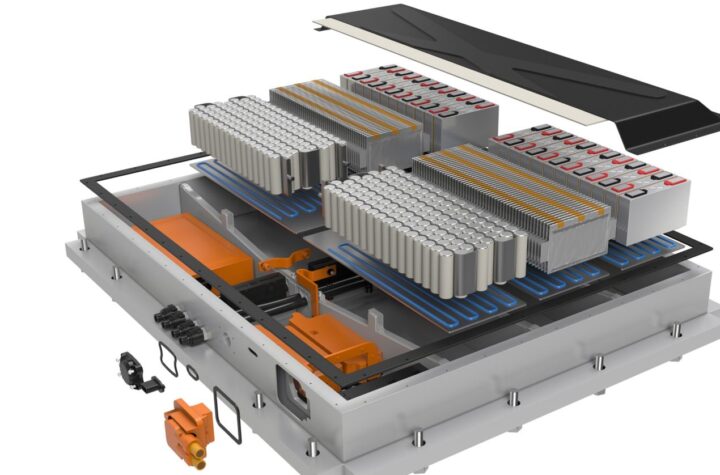

In a world where cities are becoming more congested and traffic delays are resulting in billions of dollars’ worth of down-time, the need for Smart Cities to provide sustainable mobility is rising.
Nicolas Burger, Automotive Channel Marketing Director at TomTom, believes that this need can be met with a combination of on-board routing and off-board computing power. With the increase of the number of connected cars, governments and public agencies have an opportunity to provide more valuable connected services for their citizens individually and also for the health and prosperity of the whole city itself. Intelligent navigation could be more cost-effective than ongoing optimization of the existing road infrastructure.
Automotive Industries (AI) asked Burger how he believes traffic congestion can best be minimized.
Burger: Up to now the ways to look at mobility in Smart Cities was coercive actions in the form of limitation of cars and tolls. Instead of that let’s look at the global ecosystem integrating
drivers, pedestrians, cities and resources. As a result of that users (drivers or pedestrian) that “play the game” are rewarded with incentives.
AI: What are main challenges for Smart Cities?
Burger: At the moment the world has the capability and ability to monitor big data and through that activities in busy cities. However, interacting with the driver or optimizing resources needed on the road is not considered at all. With the growing number of connected cars and population, Smart Cities will need to find a way to optimize these factors and interact with the drivers. That is why we believe smart mobility will be of utmost importance in the future.
AI: How could Smart Mobility be achieved?
Burger: Hybrid Navigation, we believe, holds the key. It is a navigation algorithm that takes advantage of both:
- a) The on-board routing algorithm based on onboard maps and traffic information received over the air, and
- b) An off-board routing platform (hosted by an ITS – or Intelligent Transport System – infrastructure) that computes a route on a server which is connected to real-time data sources. This platform will access unlimited fresh data, cross-user needs and also multi-modal real time schedules. An off-board routing platform can also benefit from higher computing power than the on-board system. The interest of the off-board routing is that the smart city (via its ITS infrastructure) is able to set its own criteria at a global scale (such as pollution level , load balancing on different roads) and synchronise with connected cars.
Furthermore, when considering the hybrid navigation principle, the ITS infrastructure must be able to exchange routing information with a wide variety of on-board navigation systems. We need to have a mean to exchange a route over the air between the ITS infrastructure and the connected cars, independently of the embedded navigation software provider and independently of the onboard map provider. The format for this route exchange can be the agnostic OpenLR format or a polyline with GPS waypoints.
AI: What are the advantages of using OpenLR?
Burger: The OpenLR format can cope with missing road networks for cars exchanging routes with and ITS infrastructure. It would then match the closest route possible. This solution is therefore robust enough to match a route with different map supplier on the client side from the server.
AI: A Smart City is composed of many different elements. What does an ITS infrastructure typically look like?
Burger: One of the components is traffic monitoring. Another element is off-board multimodal routing (one-to-one exchange with a car) that acts as tower control. Updated route recommendations are delivered over the air to car users that have subscribed to a mobility service. Multimodal routing options are assessed and traffic information is integrated to identify potential delays.
In addition, the system will be able to balance loads. Individual guiding recommendations are sent (for instance, with a ring road around the city, cars can be rerouted on the north or south- bound of the ring through a load distribution strategy).
Another element is the Open LR encoder/decoder that translates between the off-board routes and the car’s interpretation of the route. This is needed to manage cars with different navigation suppliers and map vendors. User transactions / locations / preferences can also be considered as elements of a Smart Cities ITS system. Here, the ITS infrastructure manages user accounts to keep personal information separate from the general rules of the traffic control system (the control system and the user accounts exchange anonymized ID to synchronized data). This disentanglement, along with specific ciphering rules, is designed to preserve the privacy and security of all the users. There are other ITS applications such as pollution monitoring, traffic light control, parking and Intelligent Access Management based on the city’s pollution profile.
AI: Could you please give us an example of how the ITS infrastructure could manage key performance indicators?
Burger: In essence the ITS system will interact with individuals to recommend alternate routes or to provide links to multi-modal alternatives integrating public transportation. And when a user is accepting the recommendation, he will receive rewards, such as additional miles that can be converted in free parking or free public transportation rights… depending on the smart city policy. The ITS infrastructure will also interact with the city’s own installations such as the traffic lights, the toll system, variable message signs, and parking reservations. In the Smart City, a hybrid fuel vehicle would receive preference over a conventionally powered when moving from one point to another.
Likewise, an electric car will be given preferential routing to a hybrid fuel car. Generally speaking zero emission transportation, public transportation and carpooling have specific advantages as they contribute to improve the air quality and limit congestion. But, the benefits (rewards) or the penalties (costs) can vary depending on the pollution level. Incentives to use low or zero-emission vehicles will be higher when pollution levels are up.
Let me give you a concrete example: Consider the Bordeaux
urban area in France as a Smart City. The citizens of that urban area can subscribe to the Bordeaux Smart Mobility program, Pierre has a diesel car and needs to go to Bordeaux downtown for a meeting from Saint-Emillion (40 km journey). It is 9 am. Pierre enters his car and programs the destination in the navigation system and the onboard [car only] routing has a first proposal (car only journey) to reach destination.
In parallel, a request is sent to the ITS infrastructure through his Bordeaux Smart Mobility program. The ITS infrastructure identifies that, due to pollution and his car profile, (diesel), it would be better for him not to go to the city center with his car and recommends multimodal alternatives to get him to his destination. Three alternate routes are pushed to him via a message on his navigation system which are:
- a) Multimodal route 1: you can stop in Floirac with a parking reserved for you and then continue with a zero emission car sharing scheme to your meeting point. New route impact: four minute delay, and earn 100 miles in your Smart Mobility program.
- b) Multimodal route 2: You can stop in Route St Michel at the Tram station XX, parking reserved, you have five minute wait before tram. New route impact: 10 min delay and earn 200 miles in your Smart Mobility program.
- c) Multimodal route 3: You can pick up on your way two other passengers in location ZZ, parking reserved exactly at destination. New route impact: two minutes early (you can park exactly at destination and parking reserved, instead of turning around) and earn 300 miles in your Smart Mobility program. In the end Pierre accepts multimodal route c and his navigation gets a new route with a stopover in location ZZ and the destination set to the parking reserved for him.
AI: In conclusion, how would you describe the future of Smart Cities in combination with Hybrid Navigation?
Burger: Hybrid Navigation coupled with multimodal mobility paves the way for Smart Cities to go much further in their ambition of sustainable mobility. Furthermore, the rise of connected cars gives an opportunity for governments, road operators and public authorities to provide more valuable services that will have a positive impact for their citizens.










More Stories
The Advantages of Cloud-Based Fax Software for Businesses
40 YEARS OF SILICONE GROWTH IN AMERICA:
DuPont materials science advances next generation of EV batteries at The Battery Show